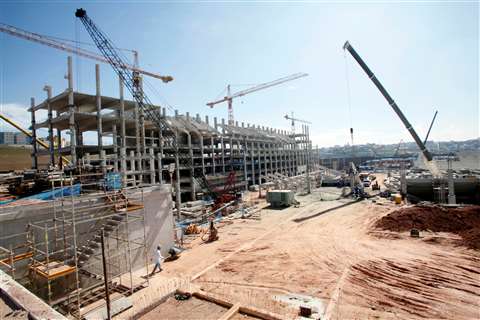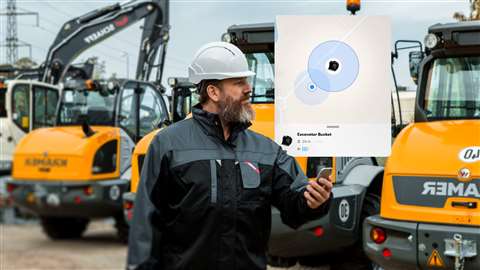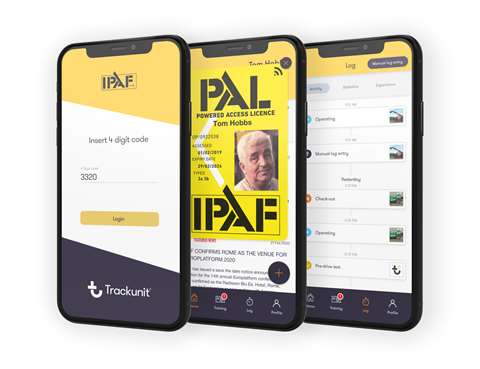The digitalisation of the construction industry
24 May 2022
Innovative technologies and the adoption of data standards are key trends in the cohesive development of construction technology and the digitalisation of the industry
Developments in Internet of Things (IoT) connectivity and devices has expanded access to data for OEMs, rental, contractors, site managers and operators.
 Developments in Internet of Things (IoT) connectivity and devices has expanded access to data (Photo: AdobeStock)
Developments in Internet of Things (IoT) connectivity and devices has expanded access to data (Photo: AdobeStock)
With annual sales of small tools amounting to around 100-110 million units, this increased connectivity offers a massive contribution to eliminating downtime and increasing site and yard productivity.
The role of standards in the adoption of construction technology
The ARA (North American Rental Association) together with the European Rental Association (ERA) have worked for over a decade to drive the development of standardisation around machine data.
ISO standards, such as BIM ISO 19650, are an important step to accelerate adoption. The ability of companies to work from the same specification to create systems that interconnect demonstrates the forward-thinking that is happening in construction organisations right now.
The US National Institute of Building Science (NIBS) and the UK’s Centre for Digital Built Britain (CDBB) are collaborating with developers and suppliers on a national BIM programme to support international alignment on technical standards.
We need to go further as an industry, to drive efficiency through more regular machine monitoring. It is important to increase the data points tracked and the frequency of data requests, to create the capability to capture more data, such as machine idle time, fuel levels, and alarms. To gain reasonable accuracy these systems should be exchanging data every one to two minutes while the equipment is active.
To enhance productivity and safety the industry must invest in technology that highlights possible errors before they happen, and this can only be done by increasing the flow of data.
 35% of construction time is spent on non-productive activity. (Photo: Trackunit)
35% of construction time is spent on non-productive activity. (Photo: Trackunit)
Wasting time continues to be a problem, with an estimated 35% of construction time spent on non-productive activities, such as gathering project information, correcting mistakes and looking for lost tools and equipment. All or most of these situations can be improved or eliminated through digitalisation.
Most rental fleets are a mix of OEM equipment and that is reflected on site. Increasingly, contractors and rental companies need application interoperability and a ‘single pane of glass’ user interface to be able to deliver an overview of all machines.
As the number of data points being collected increases, more capabilities can be controlled such as access control and deactivation, not only at the equipment but also from a site office, or from off-site operations.
IPAF digital PAL card
IPAF has introduced its digital PAL Card using an app to replace the older physical license which was easily abused. The digital PAL provides an online verification tool to confirm the machine operator’s up-to-date training to use various equipment types.
Trackunit partnered with IPAF in this development, which has already issued over 100,000 digital PAL cards to operators globally.
 Mobile app based ePAl licence. (Photo: IPAF)
Mobile app based ePAl licence. (Photo: IPAF)
However, we must not confuse a single pane of glass interface with a single technology platform. What is developing within construction is a federated system where organisations that own the data work closely together on data exchange, so various collaborators in the ecosystem can contribute and keep their privacy intact. This again emphasizes why data standards are essential for the development of the market.
Digital requirements for construction
The IoT devices and software systems are secondary to the services that the construction customers need to create or improve their business processes.
Most of the digital requirements need various access points and permissions depending on who, where and when the data is being interrogated.
Machine operators might require equipment fault finding on their mobile phone, while the site office may investigate project productivity, and a central office may need the overall fuel efficiency data from the whole fleet or across various projects.
 Soeren Brogaard, CEO, Trackunit. (Photo: Trackunit)
Soeren Brogaard, CEO, Trackunit. (Photo: Trackunit)
These capabilities are available from today’s applications, such as Trackunit’s Iris, Manager and Go, and offer off-the-shelf services that work instantly.
These include the ability to connect with the customers’ entire fleet, together with a host of accessories to enable better security, increased jobsite safety and productivity gains.
Data standards are essential to gather useful data and ensure compliant IoT platforms access and augment it to be beneficial to the data owners and generally across the industry.





